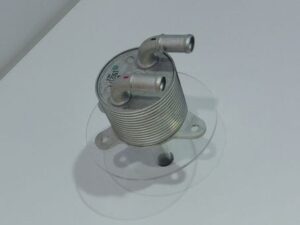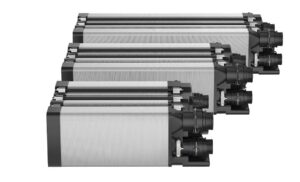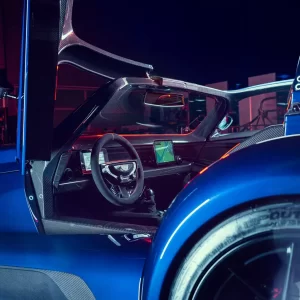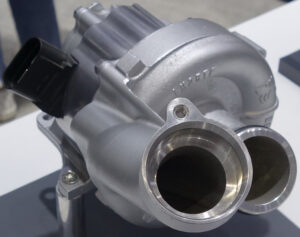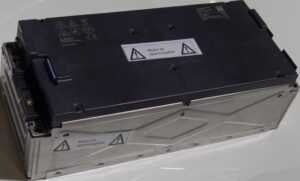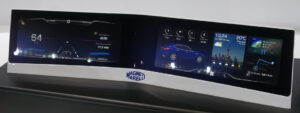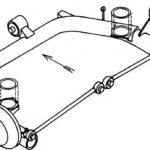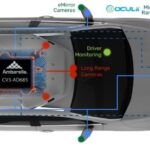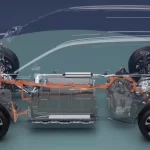
Vibracoustic has developed a cost-effective ride height and suspension leveling system that allows car manufactures to experience height leveling benefits of an air suspension with significantly less complexity and costs.
The patent-pending hydro leveling system can be tailored to front or rear-axle applications and is a cost-effective solution for ride height adjustability of lower segment cars including smaller EVs. Furthermore, it can also help increase the energy efficiency of EVs and therewith allow a smaller battery pack while maintaining the same range.
The fully operational prototype of a hydro leveling system delivers 40 mm of travel at wheel but can be adjusted for each vehicle. When used as rear-axle application it can compensate for trunk loading, deliver improved comfort, and maintain ground clearance for fully loaded vehicles, adjust the angle of stall for improved battery cooling of EVs, or provide a more comfortable loading / unloading position. Applied to both, front and rear-axle, it can additionally adjust ground clearance for speed bumps and driveways or lower the vehicle for high-speed driving to reduce drag and increase range.
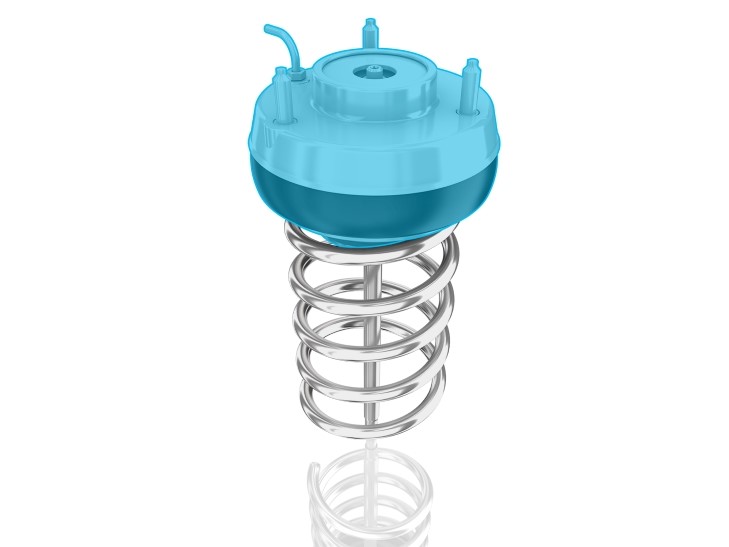
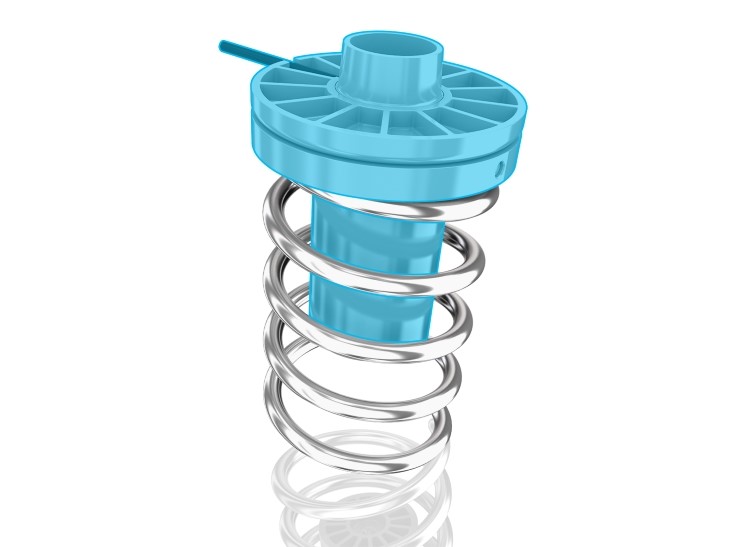
The core of the hydro leveling system is a hydraulic actuator. The design of the actuator is based on the air spring technology and deep knowledge on rubber to metal components of Vibracoustic. The hydro leveling system is controlled by a dedicated electronic control unit (ECU) including software developed by Vibracoustic. It incorporates height sensors and a powerpack (pump, tank, valves). The system offers a leveling speed of 10 mm per second in two-corner applications, operating when the vehicle is static. As a next-generation suspension system, the hydro leveling prototype system has been thoroughly tested for durability and functionality while integrated into a popular European C-segment vehicle. Leveraging its ‘whole system’ approach to product development, the Vibracoustic engineering team was able to ensure excellent NVH performance.
Testing highlighted that the hydro leveling system in a C-segment vehicle substantially improved ride and comfort metrics of a loaded vehicle. Tested under rough road conditions of different amplitudes and frequencies, the system offered large comfort improvements at low frequencies of up to 15 Hz due to significant reductions in road-induced excitations.

